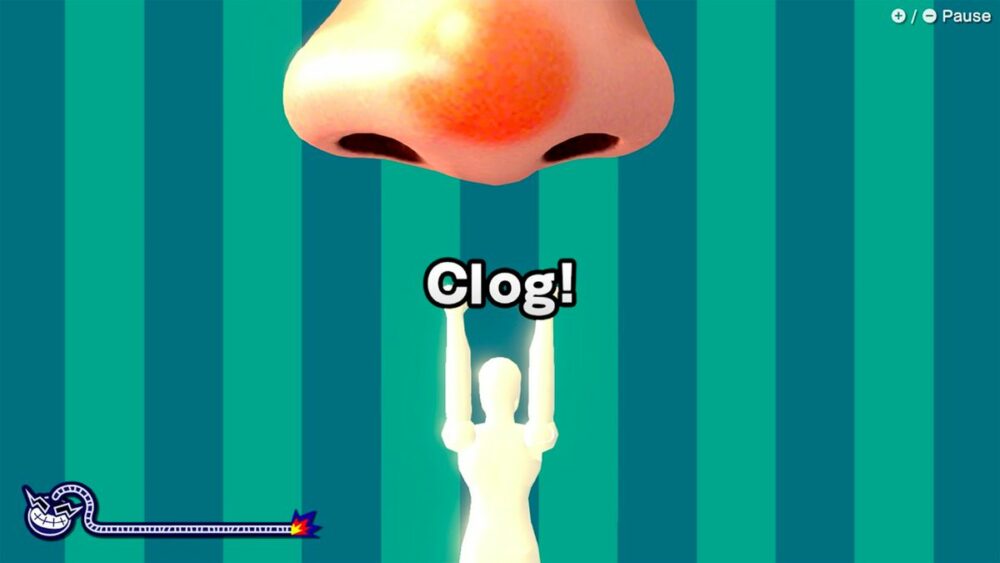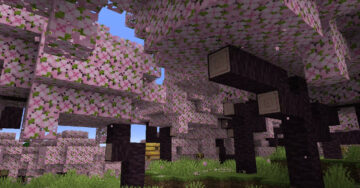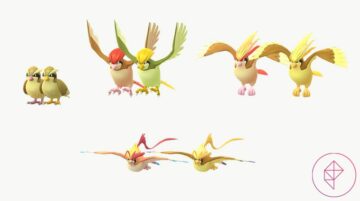After 20 years in the microgames business, Wario is finally taking a vacation. His latest starring adventure, WarioWare: Move It!, sends the money-hungry miscreant on an island getaway, where mishaps and hundreds of new microgames await.
Move It! for Nintendo Switch is a direct sequel, at least mechanically, to Wii game WarioWare: Smooth Moves. In a similar vein to its 2006 precursor, Move It! asks players to position the Switch’s Joy-Con controllers in specific ways and quickly react to on-screen prompts. These positions are called Forms, and they’re more like poses: One may have you holding your hands like an archer ready to fire an arrow, while another will have you stand, arms outstretched, as if you’re massaging an invisible person. One of the more fun Forms has you pose like a chicken, with one Joy-Con as your beak and the other as your tail feathers. (It’s called the “Ba-KAW!” Form.)
While in the archer Form, you may be asked to mimic the motion of reeling in a fishing rod or strumming a guitar. In massage Form, you may need to pull the brakes on a bicycle at the right moment, wring out a wet towel, or pet a dog and a cat. When miming a chicken, you may take the form of a Cucco from The Legend of Zelda trying to outrun young Link.
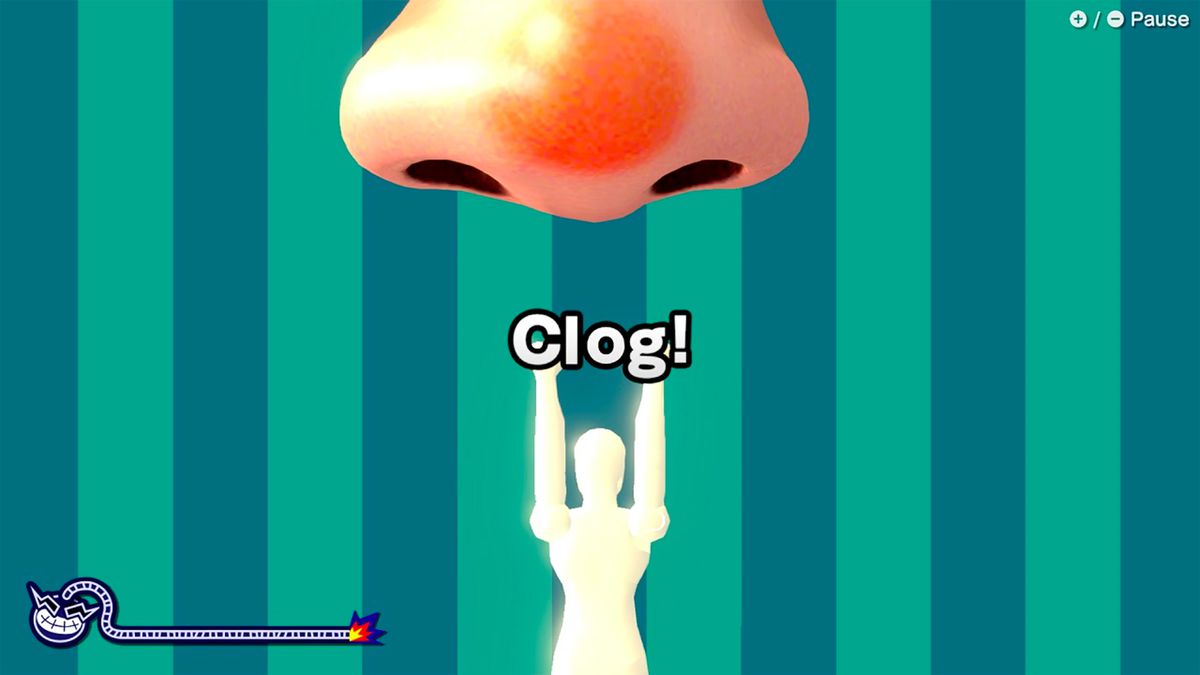
The trick, as with most WarioWare games, is that you have only a few seconds to figure out what the prompt is telling you to do in the situation shown on screen. WarioWare: Move It!, like its predecessors, is fun in that frantic way.
But it’s also one of the more frustrating games to play as a group — Move It! really shines in multiplayer — because of a handful of the poses in the mix. Move It! requires more of its players than just doing silly motion-controlled movements; you’ll sometimes need to point the right Joy-Con’s IR camera at one of your hands to perform some gesture. Another Form, Pounce, has you lay the Joy-Cons on a flat surface and flip or snatch them to win a microgame. I found Pounce to be the game’s most annoying Form, because its instructions were not only confusing, but it was also often unclear if we were doing the wrong movement or if the controllers weren’t registering what we were doing. We failed numerous Pounce games, and it often wasn’t obvious why.
WarioWare: Move It! is smart about handling failure, though, especially in cooperative group play, where players switch off and occasionally play a microgame together. If my partner failed a microgame, I could tag in for a second attempt and reclaim a lost life for us. And when we reached a “game over” screen as a team, we could jump back in by performing a “secret pose” that’s silly enough to erase the sting of defeat.

Playing through the story of WarioWare: Move It! takes a little over an hour, and it’s designed to mainly teach you the Forms and game types that you’ll play in other modes — sort of like a very frantic tutorial. The story is silly nonsense, and you’ll play as the various employees of WarioWare, Inc. to progress. Once you’re done with the story, you can revisit levels to see more microgames. You’ll also have access to a variety of other modes, including the Museum, which features all the microgames you’ve unlocked thus far, and multiple two-player cooperative and competitive modes.
One particularly fun unlockable mode is called Copycat Mirror; this two-player mode requires one player (who isn’t actually holding any Joy-Cons) to perform each level’s moves while the other player (who does have Joy-Cons) looks at their partner — not the TV — and mimics what they do to win.
There’s a separate Party mode for up to four players, which combines the board-based gameplay of Mario Party with a string of WarioWare microgames. I only managed to play Party mode at a hands-on event well before the game’s launch, but found it just as fun (if not more) frantically playing games as a large group as in a duo. And it was certainly more satisfying than playing WarioWare: Move It! solo, which is enjoyable mainly for chasing high scores and unlocking variations on previously played microgames.
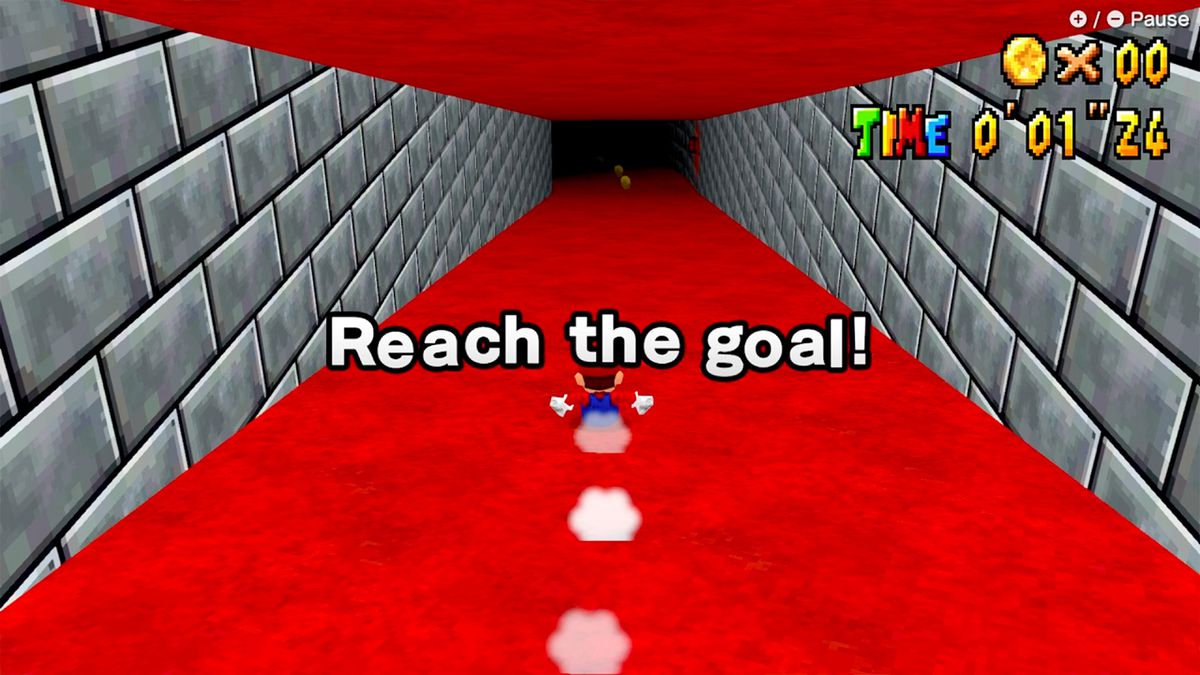
Switch owners who are considering WarioWare: Move It! should note that the game requires a good deal of movement and space in which to move. Most games require some sort of full-body motion, as players are asked to stand up, crouch, or get down on the floor in some modes. It can be a workout! The game does not have any kind of control or accessibility options to accommodate players who might have mobility issues.
The game also adamantly requires that you have Joy-Con straps attached; some microgames have you drop or dangle the controllers in order to react to on-screen prompts, so make sure you dig out those accessories before you even think about playing.
For the franchise’s 11th entry, WarioWare: Move It! takes its inspiration from one of the series’ best entries, using the unique capabilities of the Switch and its controllers for a fresh batch of fun microgames. It can be frustrating at times, and switching between Forms and poses can be awkward. But if you need a new multiplayer game for friends and family who aren’t hardcore gamers, WarioWare: Move It! is a delightful way to introduce more people to the magic of Wario.
WarioWare: Move It! will be released on Nov. 3 on Nintendo Switch. The game was reviewed on Switch using a pre-release download code provided by Nintendo. Vox Media has affiliate partnerships. These do not influence editorial content, though Vox Media may earn commissions for products purchased via affiliate links. You can find additional information about Polygon’s ethics policy here.
- SEO Powered Content & PR Distribution. Get Amplified Today.
- PlatoData.Network Vertical Generative Ai. Empower Yourself. Access Here.
- PlatoAiStream. Web3 Intelligence. Knowledge Amplified. Access Here.
- PlatoESG. Carbon, CleanTech, Energy, Environment, Solar, Waste Management. Access Here.
- PlatoHealth. Biotech and Clinical Trials Intelligence. Access Here.
- Source: https://www.polygon.com/reviews/23940843/warioware-move-it-review-nintendo-switch
- 1
- 20
- 20 years
- 2006
- 212
- 220
- 28
- 7
- 8
- 9
- a
- About
- access
- accessibility
- accessories
- actually
- Adventure
- Affiliate
- All
- also
- an
- and
- Another
- any
- ARE
- arms
- Arrow
- as
- At
- attempt
- back
- based
- BE
- because
- before
- BEST
- between
- bus
- business
- but
- by
- called
- CAN
- capabilities
- Cat
- certainly
- code
- combines
- commissions
- Competitive
- confusing
- considering
- content
- Control
- Controllers
- cooperative
- could
- deal
- delightful
- designed
- dig
- direct
- do
- does
- dog
- doing
- done
- down
- download
- Drop
- duo
- each
- Earn
- Editorial
- employees
- enjoyable
- enough
- entry
- especially
- ethics
- even
- Event
- EVER
- Failed
- Failure
- family
- far
- Features
- few
- Figure
- Finally
- find
- Fire
- flip
- floor
- For
- form
- forms
- found
- four
- fresh
- Friends
- from
- frustrating
- fun
- game
- gameplay
- Gamers
- Games
- Gaming
- Get
- giant
- good
- Group
- Handling
- hands
- hands-on
- hardcore
- has
- Have
- High
- his
- holding
- hour
- http
- HTTPS
- Hundreds
- i
- if
- in
- Inc.
- Including
- influence
- information
- Inspiration
- instructions
- Intelligent
- introduce
- invisible
- Is
- Island
- issues
- IT
- ITS
- Joy-Con
- jpg
- jump
- just
- kind
- large
- latest
- lay
- least
- legend of zelda
- Level
- levels
- Life
- like
- LINK
- links
- Little
- looks
- lost
- made
- Magic
- mainly
- make
- managed
- Mario
- May
- Media
- might
- mirror
- mix
- mobility
- mode
- modes
- moment
- more
- most
- move
- movement
- movements
- multiplayer
- multiplayer game
- multiple
- Museum
- my
- need
- New
- Newsletter
- Nintendo
- Nintendo Switch
- Nose
- not
- notes
- nov
- numerous
- obvious.
- of
- off
- often
- on
- once
- One
- only
- Options
- or
- order
- Other
- out
- over
- owners
- part
- particularly
- partner
- partnerships
- Party
- Patch
- patch notes
- People
- perform
- performing
- person
- plato
- plato data intelligence
- platodata
- platogaming
- play
- played
- player
- players
- Playing
- playing games
- Point
- policy
- Polygon
- pose
- poses
- position
- previously
- Products
- Progress
- provided
- purchased
- quickly
- React
- Ready
- really
- registering
- released
- require
- requires
- return
- right
- roundup
- satisfying
- Screen
- second
- see
- sends
- separate
- sequel
- shines
- should
- shown
- sign
- similar
- situation
- sliding
- smart
- smooth
- So
- Solo
- some
- sometimes
- Space
- specific
- stand
- Sting
- Story
- String
- super
- Super Mario
- Super Mario 64
- sure
- Surface
- Switch
- tag
- Take
- takes
- taking
- Team
- telling
- than
- that
- The
- The Game
- The Legend of Zelda
- their
- Them
- These
- they
- things
- think
- this
- those
- though
- Through
- Thus
- times
- to
- together
- tour
- toward
- tradition
- trying
- tutorial
- tv
- twist
- types
- unclear
- unique
- unlocked
- Unlocking
- up
- us
- using
- variety
- various
- very
- via
- W3
- was
- way
- ways
- we
- weekly
- well
- were
- What
- when
- where
- while
- WHO
- Wii
- will
- win
- with
- wrong
- XML
- years
- you
- young
- your
- Zelda
- zephyrnet
